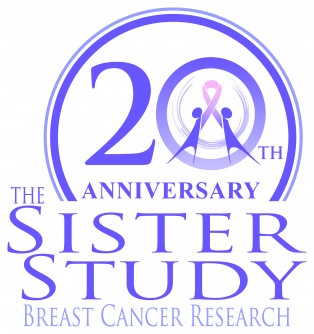Media Advisory
Sister Study turns 20
50,000 women from across the U.S., including Puerto Rico are helping NIH find how the environment and genes influence breast cancer risk
Newswise — What:
This October marks the 20th anniversary of the Sister Study, the nation’s largest and longest ongoing study of women with a close family history of breast cancer. This landmark study seeks to identify the environmental and genetic factors that affect a women’s chance of developing breast cancer. The study is led by the National Institute of Environmental Health Sciences (NIEHS), part of NIH.
The Sister Study was initiated in response to community concerns about rising rates of breast cancer in the United States during the 1980s and 1990s. NIEHS researchers proposed a novel research approach – to study the sisters of women who have had breast cancer. Sisters share many things including genes and early-life environments. These common features make women whose sisters had breast cancer twice as likely to develop breast cancer themselves. By studying these sisters, researchers have increased ability to detect disease risks that are related to both environment and genes.
NIEHS launched the study and enrolled its first participant in the fall of 2003. By the spring of 2009 the study surpassed its goal of 50,000 participants. The researchers collected biological and environmental samples – blood, urine, toenail clippings and household dust – from participants at the beginning of the study. They used questionnaires to gather a multitude of data about health histories, environmental exposures, and lifestyles.
The Sister Study is still going strong. The women continue to participate in a variety of ways, including annually updating contact information and reporting any major changes to their health.
“We are extremely grateful for all the women who’ve participated in the study. There would be no Sister Study without them,” said Dale Sandler, Ph.D., chief of the Epidemiology Branch at NIEHS and principal investigator of the Sister Study. “Over the past 20 years, more than 50,000 women have devoted their time and shared very personal information about their family histories, their lifestyles, and their health – all to help us understand how we might change our environment to reduce our risk for breast cancer.”
The study has discovered many of the factors that may contribute to a woman developing breast cancer, including air pollution, trauma and psychosocial stress, dietary factors, permanent hair dye and chemical hair straighteners, some ingredients in personal care products, and obesity. The study has also discovered how exposure-related changes to DNA may influence biological aging and breast cancer risk. A full listing of the research publications from the Sister Study is available at https://sisterstudy.niehs.nih.gov.
- Video and Supporting Materials. To commemorate this 20-year milestone and to mark National Breast Cancer Awareness Month, NIEHS developed a suite of products including a 10-minute video available in English and available with Spanish captions, to showcase how the Sister Study started, what it has accomplished, and to spotlight the participants who make it all possible. The video is available on the NIEHS YouTube channel at https://youtu.be/QdiOFZ5oBr4 and with other materials on the Sister Study website at https://sisterstudy.niehs.nih.gov.
Who:
Dale Sandler, Ph.D., lead researcher for the Sister Study, and chief of the NIEHS Epidemiology Branch, is available for comment.
When:
During the first week of October, Dr. Sandler and other members of the NIEHS Sister Study research team will be available for media interviews.

